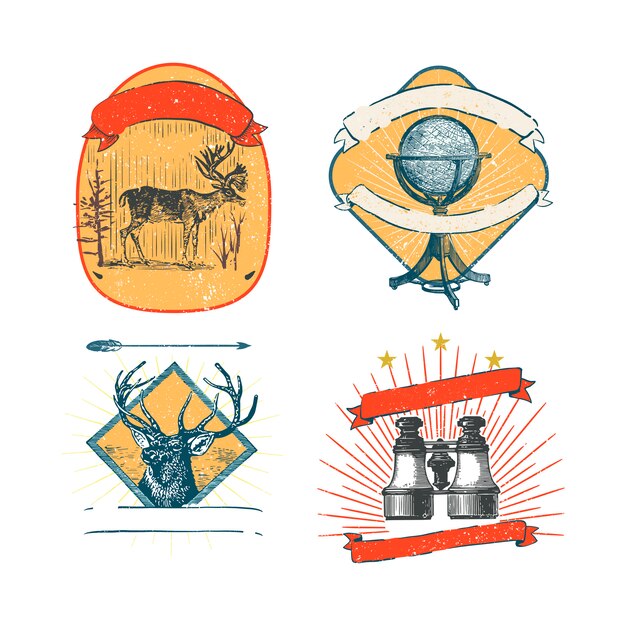
The Compelling Tale of Custer’s Last Stand
The story of Custer’s Last Stand is one that has captivated me from childhood. Seeing the actual location where this historical event unfolded is surreal. It’s heartening to see that the site now also honorably discusses the Native American perspective and impact.
# About Little Bighorn National Battlefield
June 25, 1876:
Tensions between Federal Troops and Native Americans had been rising, especially as some tribes began resisting life on reservations. The discovery of gold in the Black Hills (present-day South Dakota) only fueled these tensions further. The Lakota, although given this land, found themselves increasingly pushed out, leading to further strife not just with settlers but among tribes such as the Lakota, Sioux, Cheyenne, and others.
Around 10,000 Native Americans gathered in the area now known as Little Bighorn, defying orders to return to their reservations. Meanwhile, U.S. troops under Lieutenant Colonel George Armstrong Custer were dispatched to confront them. The tribes, led by Sitting Bull, Crazy Horse, and others, were camped along the riverbed.
The Battle Unfolds:
On June 24th, fearing their plans had been compromised, Custer decided to attack the following morning. He underestimated the Native forces, believing they numbered only 800. He divided his troops to attack different sections of the camps.
By mid-day, Custer and his 200 men faced thousands of Native American warriors on what would become his infamous “last stand.” Overwhelmed and outnumbered, nearly all of Custer’s men were killed. Some soldiers reportedly took their own lives rather than face capture.
The Battle of Little Bighorn resulted in severe losses for Custer’s men, while the tribes suffered fewer casualties. This encounter would become infamous as Custer’s Last Stand or the Battle of Greasy Grass, as named by the tribes.
# The Aftermath
Despite this victory for the Native warriors, the battle marked the final significant clash in the Indian Wars. Many warriors, facing famine, eventually returned to reservations. Sitting Bull fled to Canada but returned due to scarcity of resources, while Crazy Horse surrendered the following year. The U.S. military continued to encroach on tribal lands, bolstered by increased troop deployments approved by Congress.
Sadly, this event symbolized the last significant effort of these tribes against overwhelming forces, leading many to a fate confined to reservations. Notably, Sitting Bull later gained fame touring with Buffalo Bill Cody’s troupe.
# Places to Visit
Indian Memorial:
One of the most beautiful parts of the battlefield is the memorial dedicated to the Native warriors who fell in battle. Originally, the preservation efforts focused solely on the U.S. Army, but in 1996, efforts began to recognize Native contributions and losses. The memorial, completed in 2013, includes stunning granite panels and interpretations honoring these warriors.
7th Cavalry Memorial:
Established in 1877, this memorial honors the 7th Cavalry men who perished. Survivors of the battle interred their fallen comrades on the hill now associated with Custer’s Last Stand.
Custer National Cemetery:
Created in 1879, this cemetery became a dedicated resting place for those who fought here. Notably, soldiers of all ranks were buried equally, emphasizing equality in death.
Auto Tour:
To fully explore the battlefield’s many memorials and significant sites, an auto tour is essential. The tour road also provides access to the Reno-Benteen Battlefield.
Deep Ravine Trail:
This self-guided, half-mile trail leads you through an area of fierce combat. Markers along the way highlight where both U.S. soldiers and Native warriors fell during the fight.
Reno-Benteen Defense Site:
Positioned at the opposite end of the tour road, this site offers insight into the defensive positions of Major Marcus Reno and Captain Frederick W. Benteen, showcasing their retreat and subsequent stand.
# Visiting Little Bighorn Battlefield National Monument
Experiencing the actual battlefield where these historical events took place is an unforgettable journey. The improved facilities now provide more balanced narratives, including tributes to the Native warriors. While names like Crazy Horse and Sitting Bull are familiar, the broader history of these people often goes untold in mainstream education.
# Essential Information
Visitor Center:
Located at 756 Battlefield Tour Road, Crow Agency, MT 59022, the Visitor Center offers a small museum, bookstore, and detailed information on the site. During summer, rangers provide talks on the patio.
Hours:
– Summer (Memorial Day – Labor Day): 8:00 am – 6:00 pm (Driving Tour Road and Deep Ravine Walking Trail close at 5:30 pm)
– Fall – Spring (Labor Day – Memorial Day): 8:00 am – 4:30 pm (Driving Tour Road and Deep Ravine Walking Trail close at 4:00 pm)
Fees:
– Private Vehicle: $25.00
– Motorcycle: $20.00
– Individual (foot/bike): $15.00
National Park passports stamps are available at the Visitor Center.
Getting There:
The battlefield is about 63 miles southeast of Billings, Montana, near I-90 within the Crow Reservation. From Billings, take I-90 south to exit 510 for Little Bighorn Battlefield and follow the signs.
By Air:
The closest airport is Billings-Logan International Airport (BIL), roughly an hour away, with flights from major airlines like Alaska, Delta, United, American, and Allegiant.
# Discover More
For more insights into the region’s rich history, you might enjoy visiting Pompeys Pillar National Monument, Grant-Kohrs Ranch National Historic Site, Theodore Roosevelt National Park, and Knife River Indian Villages.
—
Visiting Little Bighorn Battlefield National Monument provides a deep, engaging connection to a critical moment in American history, offering a poignant reminder of the complexities and sacrifices of both sides in the story.